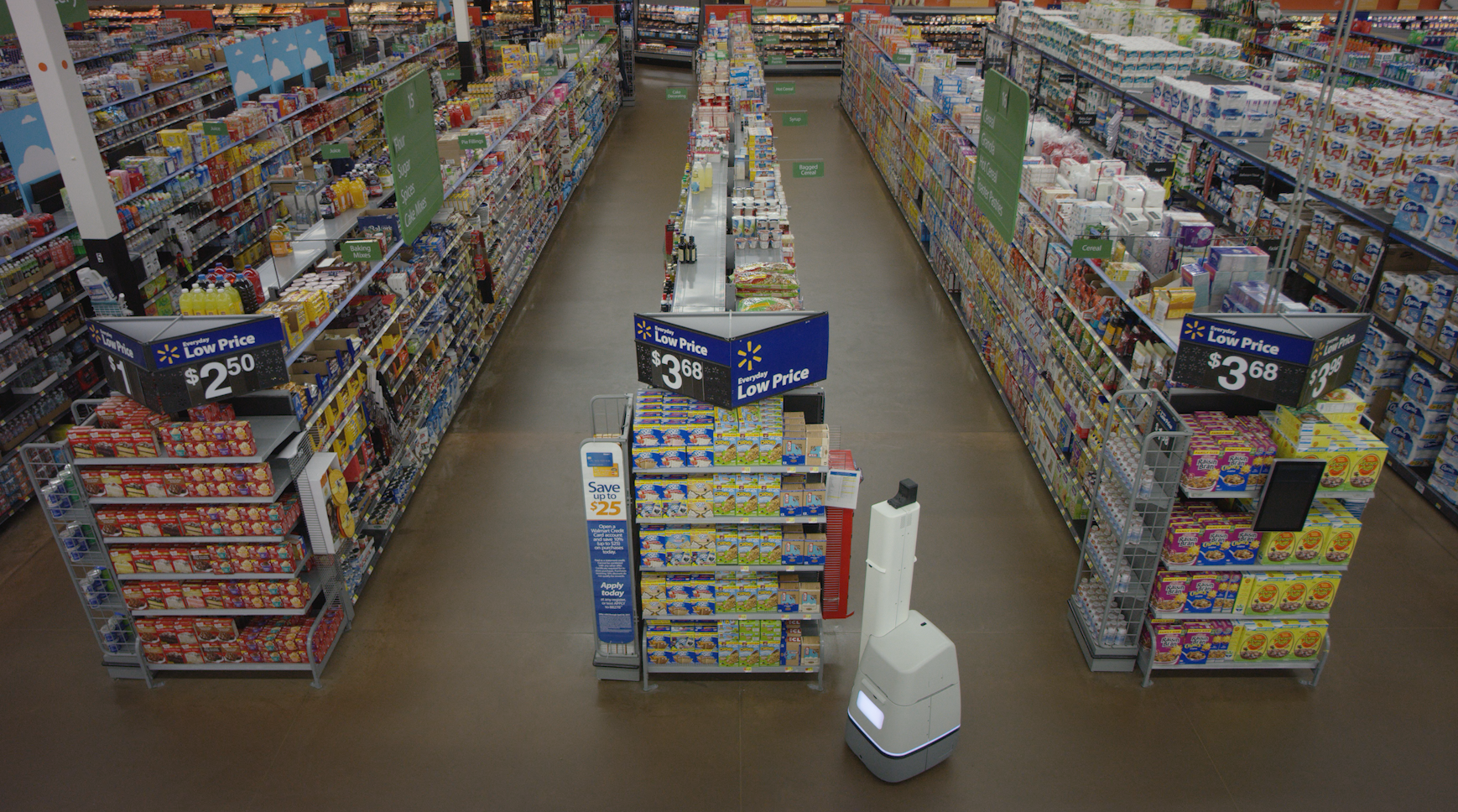Walmart’s new robots are loved by staff—and ignored by customers

Walmart may be grabbing headlines for its embrace of cutting-edge technologies, but at the heart of those changes are companies like Bossa Nova. The San Francisco-based robotics firm created the robots now roaming the aisles in 50 Walmart locations around the US.
Bossa Nova’s robots are able to perform tasks such as identifying when items are out of stock, locating incorrect prices, and detecting wrong or missing labels. We spoke to Martin Hitch, chief business officer at Bossa Nova, about the technology behind the machines and how they are being received by shoppers and employees.
This article is part of a weekly series paired with our newsletter Clocking In, which covers the impact of technology on the future of work. Sign up here – it’s free!
Erin: How have employees responded to the robots? Have you received any pushback because of the “robots are taking my job” idea?
Martin: When we first deployed a robot in a store, the associates were the people that understood it first. This boring, repetitive task of scanning the shelves—we have yet to meet someone who has liked to do that. Employees instantly become the advocates for the robot.
“Employees instantly become the advocates for the robot.”
One way they do that is by giving it a name—the robots all have Walmart name badges on. The employees have competitions to see what the right name is for each robot. They also advocate for the robot to the general public. It’s the store staff saying, “It’s helping me.” We see them now defending the robot.
What about shoppers?
It's typically one of two different extremes. One of them is natural curiosity. They are going to go ask what it does, and why. When a robot is first deployed, we have a chaperone in the store to answer those questions. But at least 50 percent completely ignore it like it is any other device, which surprised us.
How are the robots able to communicate with the shoppers and their human coworkers once the chaperone is gone?
We spent a lot of time researching the right way for the robots to interact with humans. One of the earlier tests used car signaling as a model to help people understand what the robot is going to do next. We put a foam model on top of a radio-controlled toy car and drove it through the store. It had a system that used blinking the signals similar to those of a car. People didn’t understand what it was doing. They didn’t expect to see cars driving around their retail store—they expected more subtle cues. So today when our robot moves it emits a sound so it doesn’t surprise people, and it uses light to indicate when people get too close.
The conversation has been edited for clarity and length.
Keep Reading
Most Popular
How scientists traced a mysterious covid case back to six toilets
When wastewater surveillance turns into a hunt for a single infected individual, the ethics get tricky.
The problem with plug-in hybrids? Their drivers.
Plug-in hybrids are often sold as a transition to EVs, but new data from Europe shows we’re still underestimating the emissions they produce.
Sam Altman says helpful agents are poised to become AI’s killer function
Open AI’s CEO says we won’t need new hardware or lots more training data to get there.
Stay connected
Get the latest updates from
MIT Technology Review
Discover special offers, top stories, upcoming events, and more.